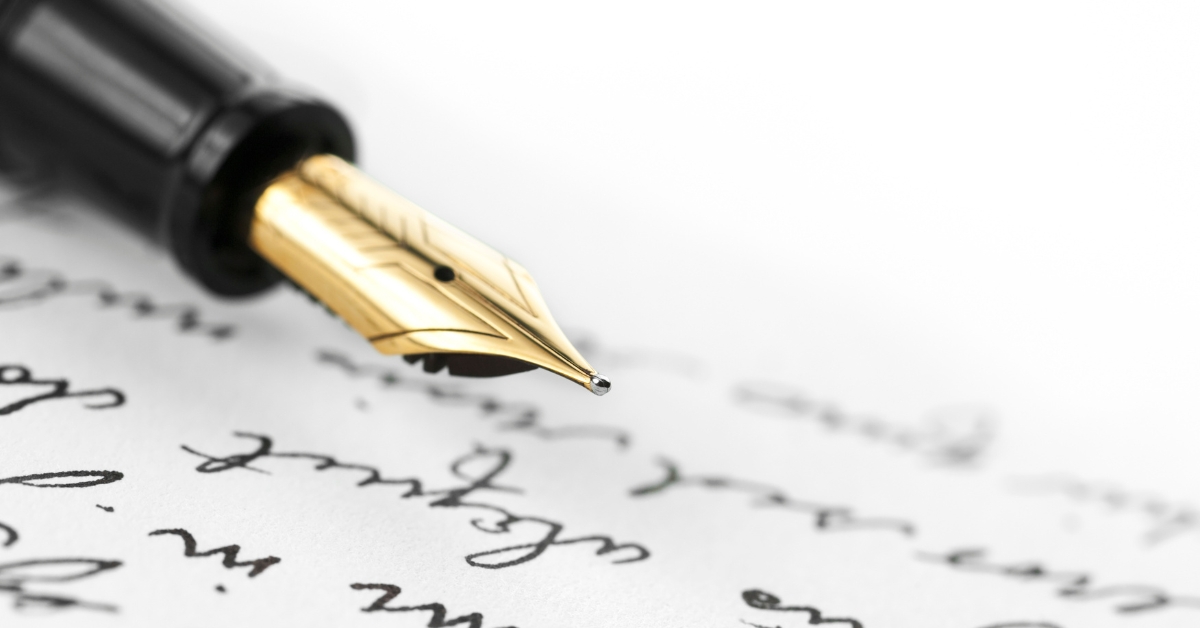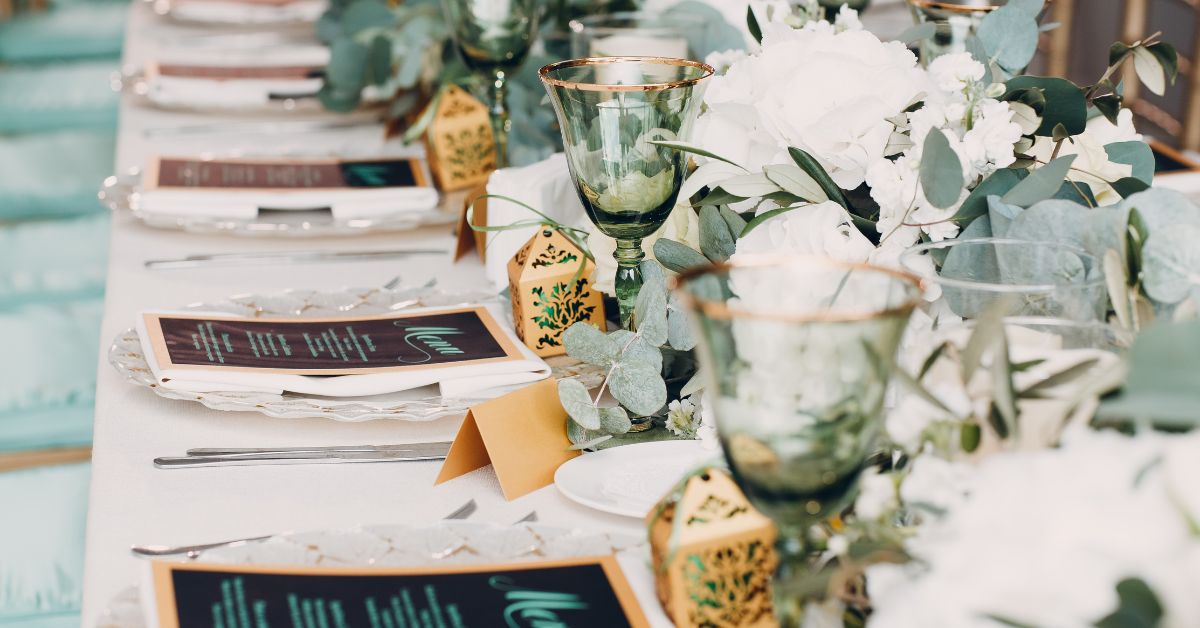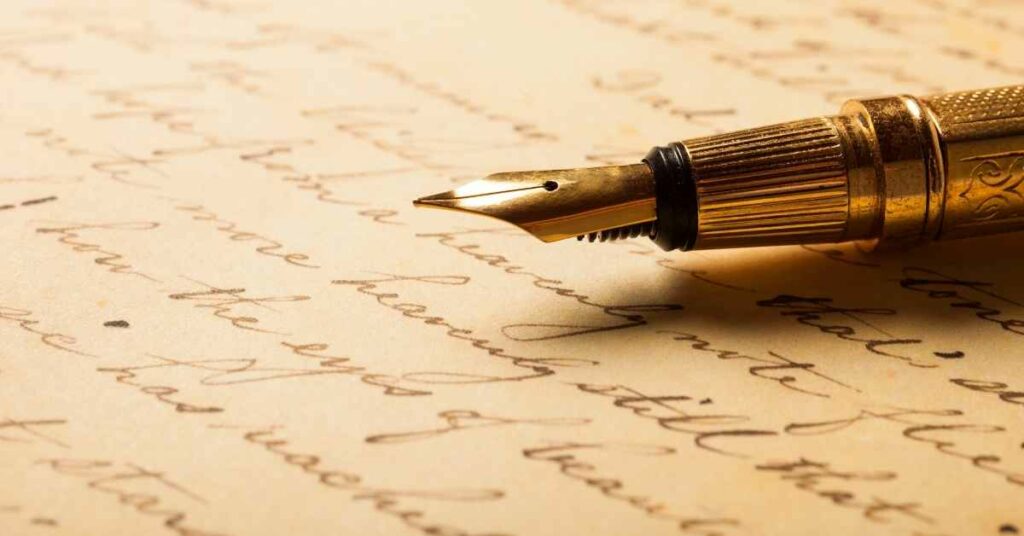
Calligraphy is an ancient and versatile art form that has captured the hearts of many worldwide. You may be familiar with various styles and techniques as a calligrapher, but there is always more to learn and explore. This blog will delve into popular calligraphy styles and provide helpful tips on mastering these techniques. This guide will not only inspire you to expand your skills but also attract those who are interested in learning more about calligraphy.
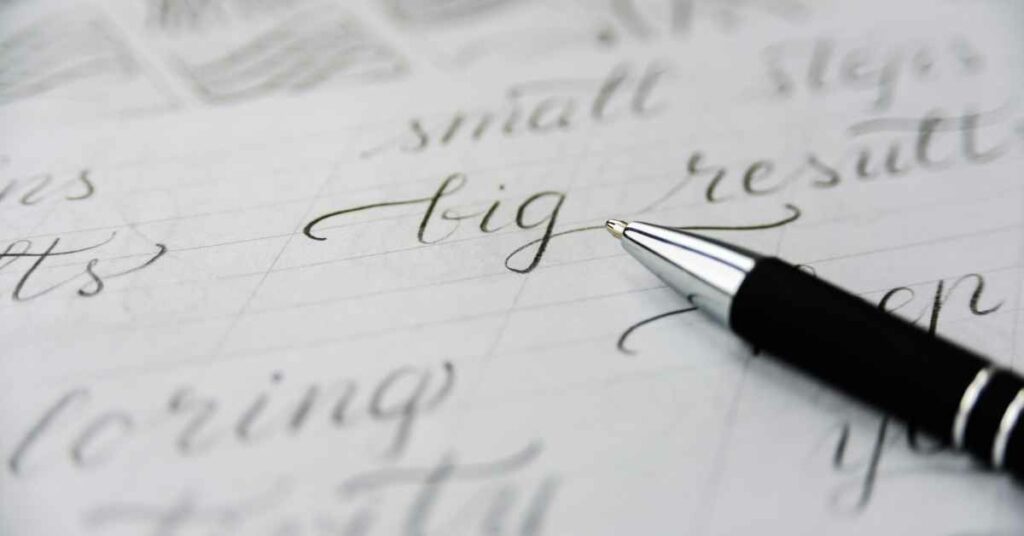
The Origins and History of Copperplate
Have you ever heard of the origins and history of Copperplate script? If not, let me tell you about it. Copperplate script, also known as English Roundhand, is a style of calligraphy that originated in England in the 16th century. It was used for writing documents and manuscripts and is considered a high-class form of handwriting. As implied by its name, Copperplate originates from when an engraver would transfer a scribe’s handwritten text from a book or manual onto a copper plate. The Copperplate script is still popular today and is often used for formal invitations or certificates due to its elegant and sophisticated appearance. To master this calligraphy style, it is essential to understand the unique characteristics that make it stand out from other scripts. With patience and practice, anyone can learn the art of Copperplate script and create beautiful, flowing letters that will impress anyone who sees them.
The Elegance of Copperplate Calligraphy
Copperplate calligraphy is just one of the many styles of calligraphy that you can explore when diving into the art of beautiful writing. The elegance of Copperplate Calligraphy is undeniable. It is a lovely script used for centuries to elevate written works. It features delicate, thin strokes contrasted with bold, flourishing lines that curve and twist in an almost dance-like manner. Whether you are interested in creating invitations, designing logos, or improving your handwriting, mastering calligraphy styles can take your skills to the next level. With consistent practice and patience, you, too, can become a skilled calligrapher and add a unique touch of elegance to whatever project you undertake.
Tips for Perfecting Copperplate Script
If you want to explore beautiful writing styles, calligraphy is an art form. The beautiful looping letters and elegant strokes of Copperplate script are especially pleasing to the eye. But getting those letters just right can take a little bit of practice. One tip for perfecting your Copperplate script is to start with the basics by practicing using a pointed nib pen on lined paper. Once you’ve practiced the basic strokes, focusing on finer details such as letter spacing and slant is important. Finally, use high-quality inks that won’t bleed on the paper – that way, every stroke, dot, and dash will look as crisp and perfect as possible. With much practice, you can master the art of Copperplate script calligraphy and make your writing stand out.
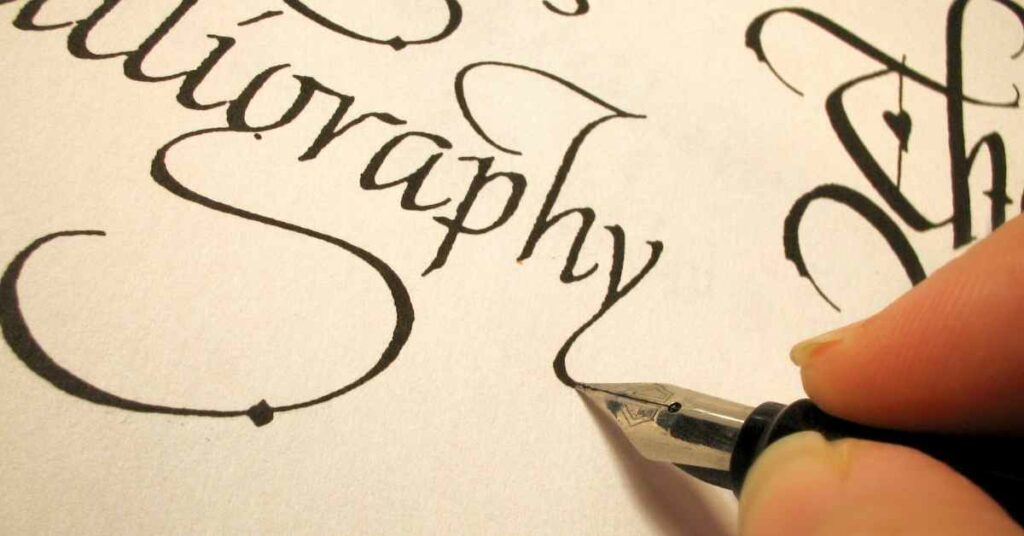
The Bold Beauty of Gothic Calligraphy
The Bold Beauty of Gothic Calligraphy is a sight to behold. This calligraphy style is characterized by its bold, heavy strokes and intricate design. It is a challenging style to master, but the results are worth it. Gothic calligraphy is perfect for creating invitations, posters, and other decorative pieces. When practicing this style, using a broad-nibbed pen or a pointed pen with a flexible nib is important. The right tools can make all the difference in creating stunning art pieces. With practice and patience, anyone can master this beautiful form of calligraphy.
Understanding Gothic Script and its Variations
Understanding Gothic script and its variations is essential to mastering calligraphy styles. This elegant lettering style has been popular for centuries and is characterized by its tall, narrow letters with pointed arches and intricate details. Calligraphers use a dip pen with a broad nib to create a Gothic script and create thin and thick strokes by adjusting the pressure applied. Several variations of the Gothic script include Blackletter, Textura, and Fraktur. Each variation has unique features, such as Textura’s squared-off look or Fraktur’s more curved lines. Learning and practicing these styles takes time and patience, but once mastered, it can add a touch of sophistication and elegance to any piece of writing.
How to Practice and Master Gothic Calligraphy
How does one practice and master Gothic calligraphy? It’s a question that demands a lot of patience and dedication to the art. But the good news is that you can easily create beautiful Gothic letters once you have grasped the basics and practiced them over time. Choosing the right tools is one of the most important things to remember when starting with Gothic calligraphy. A fountain pen or brush pen with a fine tip is ideal for creating intricate details and thin lines that define this type of calligraphy. Gothic calligraphy requires a steady hand and slow movements, so don’t rush. Instead, learn the strokes and curves that give this calligraphy a distinct look. You can create beautiful pieces of unique and awe-inspiring art with practice and mastering gothic calligraphy.
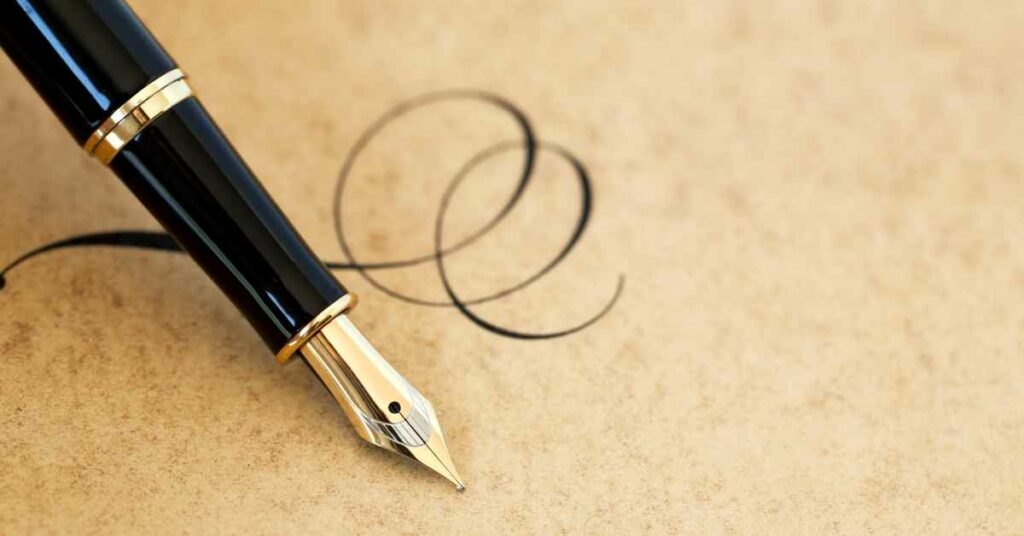
The Romantic Flourish of Spencerian Script
The Romantic Flourish of Spencerian Script is a classic calligraphy style that has been around for over a century. It is recognizable for its elegant and flowing letters that seem to dance across the page. Many calligraphers today still use Spencerian Script as a foundation for their style. Its popularity is due to its beauty and versatility, which can fit any occasion, from formal invitations to personal letters. Once you master this style’s basic strokes and techniques, you can add your creative flare to make it unique. So why not explore the beauty of Spencerian Script and let your art of beautiful writing create a lasting impression on the page?
The Story Behind Spencerian Script
The story behind the Spencerian script is a fascinating one. Developed by Platt Rogers Spencer in the mid-1800s, this handwriting style quickly became popular due to its elegant and ornate appearance. With its flowing loops and delicate curves, the Spencerian script is still admired today as a beautiful form of handwriting. Although it was once a widely taught style, today, it is considered a more niche form of calligraphy, requiring more skill and patience to master. However, whether you’re already familiar with Spencerian script or just starting on your calligraphy journey, the art of beautiful writing is something everyone can appreciate.
Techniques for achieving fluid and graceful strokes
Calligraphy enthusiasts highly seek after techniques for achieving fluid and graceful strokes for the Spencerian script. The Spencerian script is known for its flowing, rhythmic lines conveying elegance and sophistication. To master this style, it is important to practice regularly and pay close attention to your hand and pen position. The key to achieving the fluidity of the script is to hold the pen at a shallow angle and to move it with a steady, controlled motion. With practice, you can create stunning pieces of artwork that showcase the beauty and intricacy of the Spencerian script.
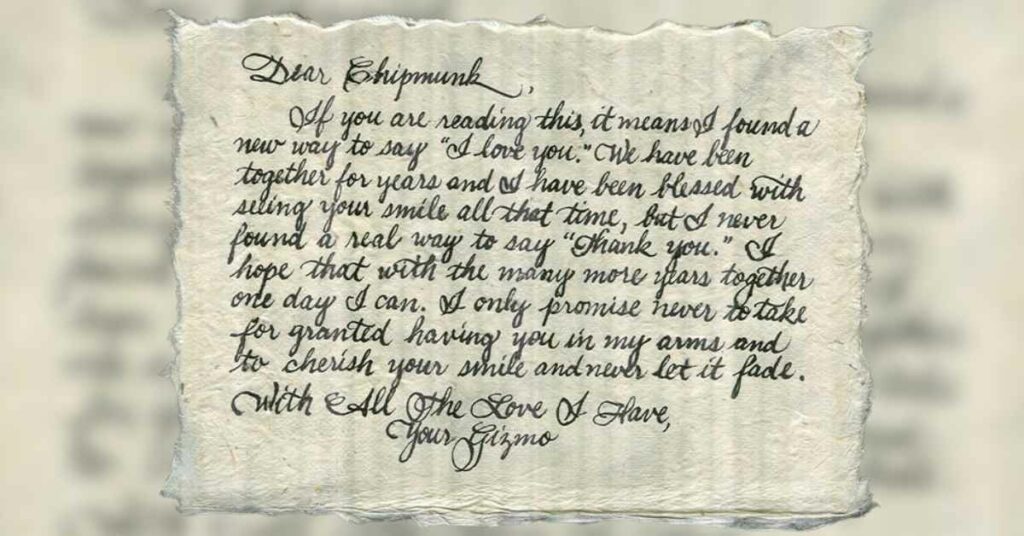
The Simplicity of Italic Calligraphy
The simplicity of Italic Calligraphy makes it an ideal choice for beginners just starting to explore the beautiful world of calligraphy. The Italic style, characterized by its slanted and cursive strokes, is perfect for creating elegant and readable handwriting. It’s a versatile style that effortlessly produces both formal and informal writing. The simple beauty of Italic letters lies in their slender and tall form, making them perfect for use in invitations, greeting cards, or even as wall art. With the right tools and practice, one can easily master this classic calligraphy style and use it to create stunning art pieces. So why not try Italic Calligraphy and see the beauty that comes with simplicity?
The Charm of Italic Script
The charm of Italic script lies in its fluidity and grace. It’s a popular style in calligraphy that is visually pleasing and great for beginners to learn. With its sleek curves and slanted composition, the Italic script adds an elegant touch to any written work. The style has a rich history, originating in Italy in the 15th century. Modern adaptations have made it even more accessible to all skill levels, and it remains a versatile option for any project, from wedding invitations to custom prints. Mastering Italic script is valuable to any calligrapher’s skill set and will impress with its classic beauty.
Tips for Creating Consistent and Elegant Italic Letters
If you want to master the Italic calligraphy style, you should keep a few tips in mind. Firstly, practicing consistently to achieve a uniform slant and consistent letter shapes is essential. Secondly, using the correct pen and ink is crucial to achieving the right effect. A good quality pen will glide smoothly across the paper, while high-quality ink will provide the rich color characteristic of calligraphy. Finally, mastering calligraphy takes patience and dedication, but the result will be worthwhile. So, keep practicing your italic letters, and soon you will be producing elegant calligraphy that will take your writing to a whole new level.
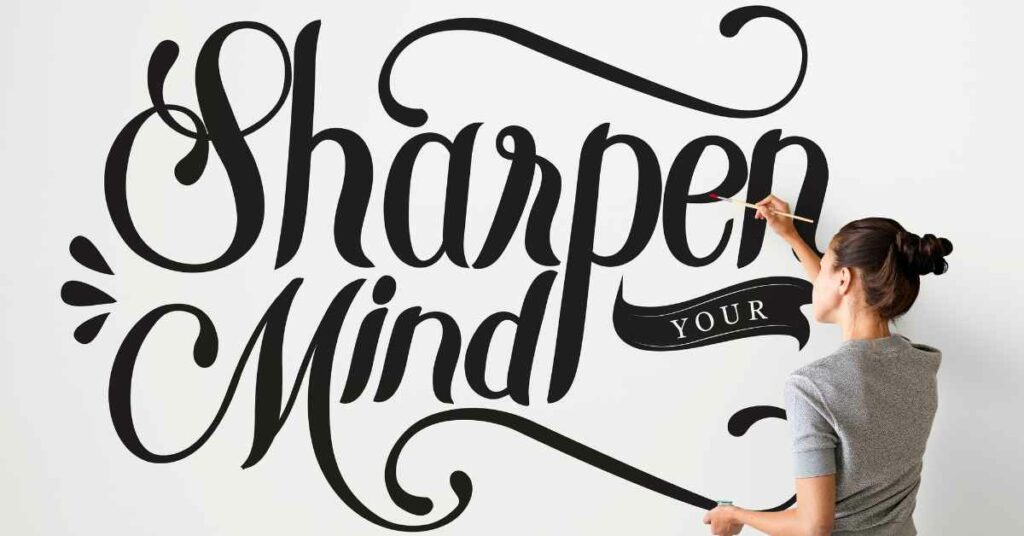
The Modern Twist: Brush Calligraphy
A modern twist on the Italic style is Brush Calligraphy, a popular trend in calligraphy. This writing style uses a brush pen instead of a traditional calligraphy pen. The brush pen allows a more flowing and natural stroke, creating a more organic and modern look. It’s an excellent way to add a fresh and stylish touch to any project, including wedding invitations or personalized gifts. Brush calligraphy is easy to learn, and with the right tools and practice, anyone can master it. With its unique flair and versatility, Brush Calligraphy has become a must-have skill in design and crafting.
The Rise of Brush Calligraphy in Contemporary Design
The rise of brush calligraphy in contemporary design has taken the art world by storm. People increasingly turn to this beautiful writing style for creative expression. Calligraphy is a timeless art, allowing people to put their unique touch on words and letters. While mastering the technique can be difficult, the results are well worth the effort. Your work can take on an air of sophistication and style that cannot be matched by any other means. So, it is no wonder that calligraphy continues to be a popular choice for those looking to add a creative touch to their writing.
How to Choose the Right Brush Pens and Materials
How to choose the right brush pens and materials for Calligraphy? It’s a good question, especially if you’re just getting started with the art of beautiful writing. The first thing to consider when selecting brush pens for calligraphy is the thickness of the stroke you want. Thin pens are great for small letters or details, while thicker ones are better for larger lettering. You’ll also want to consider the type of paper you’ll be using, as certain pens may bleed through or not work as well on certain types of paper. Finally, when starting, it’s best to experiment with a few different types of brush pens and materials to see what feels comfortable and gets you the desired results. With practice and patience, you’ll soon be on your way to mastering calligraphy styles with the perfect brush pens.
In Conclusion
Embracing the variety and richness of calligraphy styles allows you to create stunning pieces of art that cater to different tastes and purposes. As you continue to hone your skills in these techniques, you’ll elevate your craft and attract a wider audience who appreciates the beauty of handwritten art.
We hope you’ve enjoyed this blog, and if you need a calligraphy professional, contact us today!
